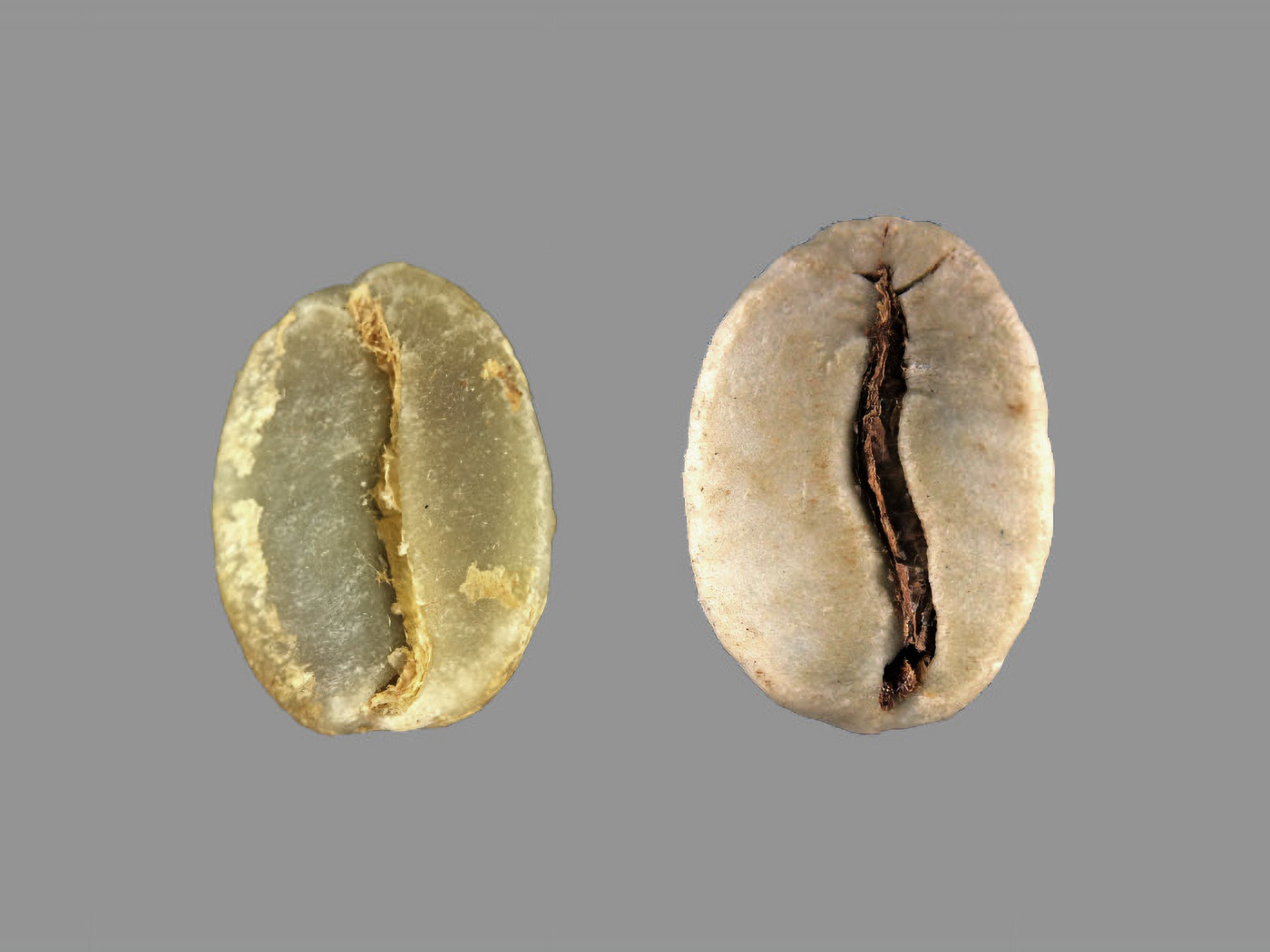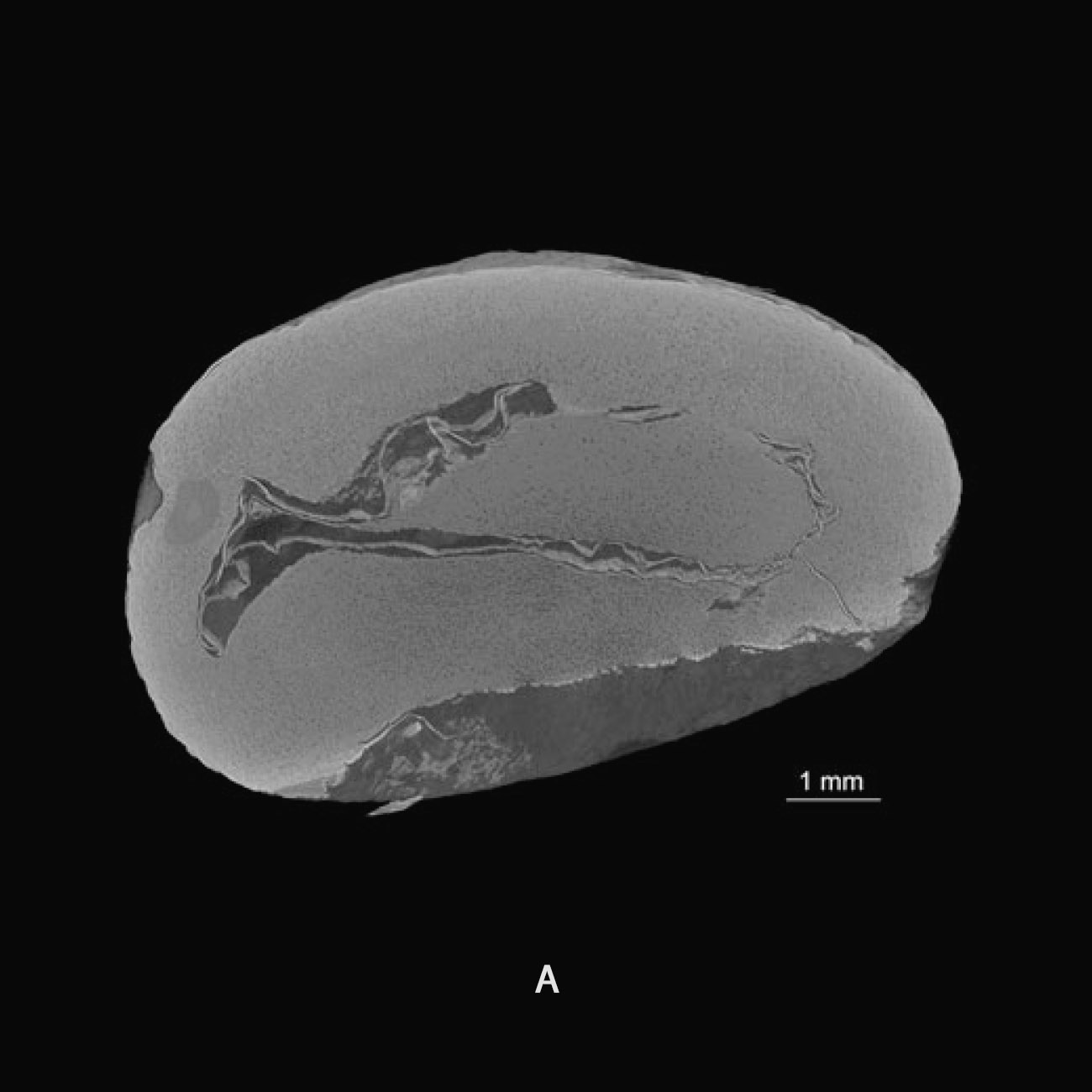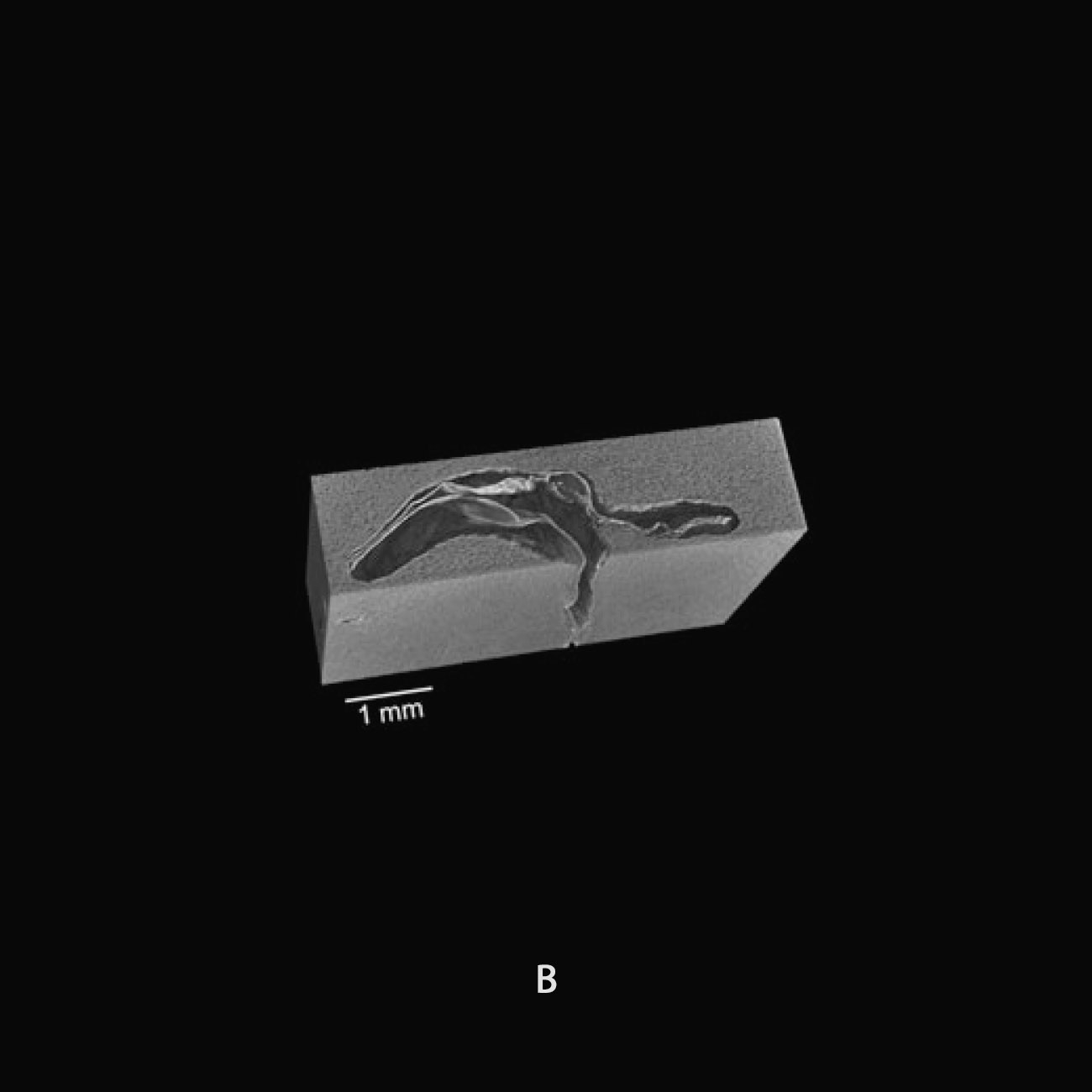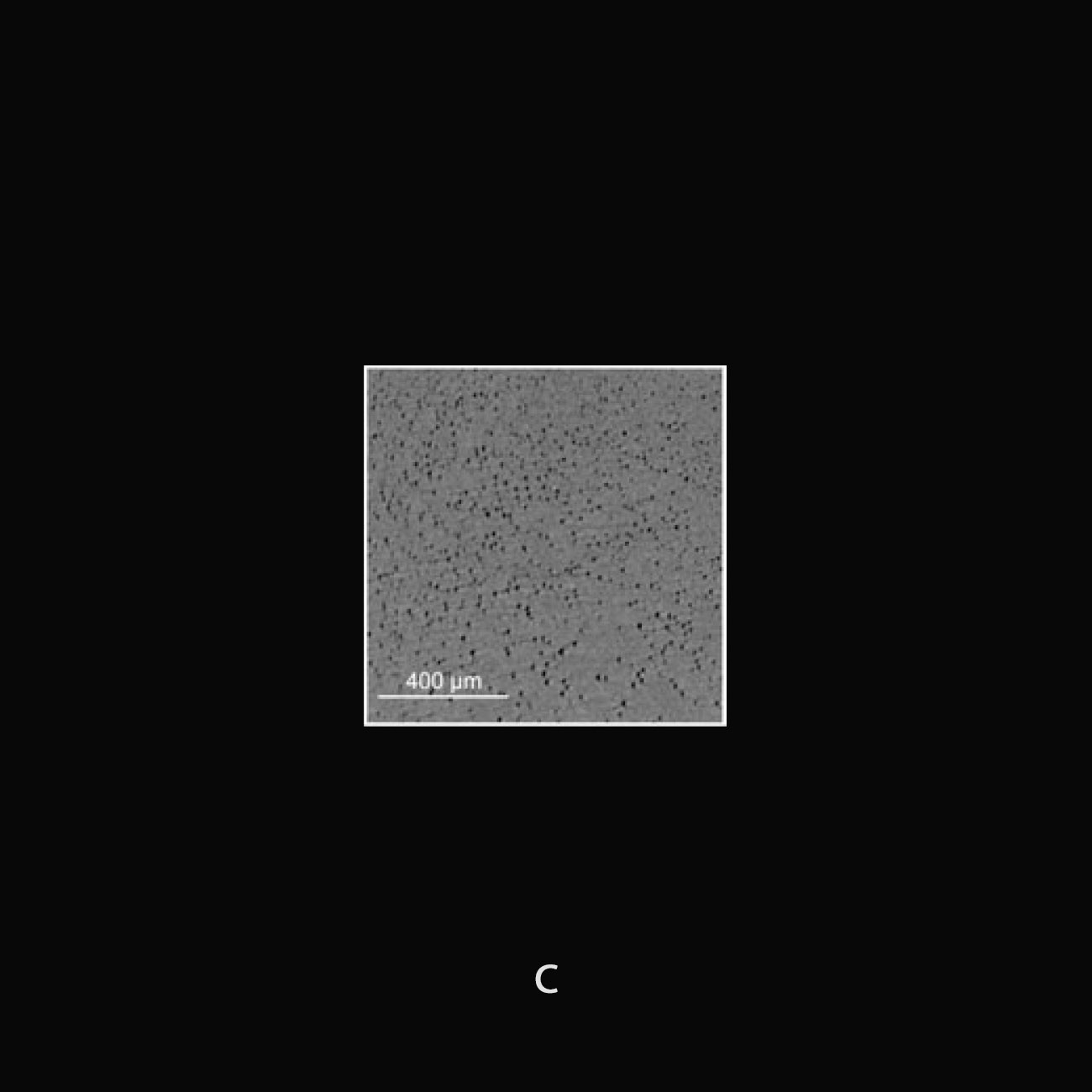For coffee roasters, one of the most important physical characteristics of a green bean is its density. Coffee beans are both hard and dense, with unusually thick cell walls compared with plant materials of other species (Schenker and Rothgeb 2017).
Bean density is closely linked to coffee quality and to sorting practices at the dry mill, so measuring the density is an important part of evaluating coffees on arrival at the importer’s warehouse. The density of green coffee beans also plays a major role in how the coffee behaves during the roast, affecting how heat transfers into the bean and how easily gases escape.
The bean density and porosity of green coffee are closely linked. Green beans have a porous structure with both large voids inside the bean and micropores in the bean’s cellular structure. More and larger pores result in a lower-density coffee.
A 3D visualisation of the structure of a green bean showing the void at the bean centre (a, b) and the microporous structure of the bean material (c). Image from Pittia et al (2011)
Higher-density beans tend to have a tight centre cut, typically curved in an S shape. Lower-density beans tend to have a more open centre cut which may also be straighter.
 Density affects the visual appearance of the centre cut. The higher-density bean (left) has a tight, curled centre cut while the lower-density bean has a more open centre cut.
Density affects the visual appearance of the centre cut. The higher-density bean (left) has a tight, curled centre cut while the lower-density bean has a more open centre cut.
Measuring Density
Measurements of density are complicated by the fact that the term ‘density’ can be used to refer to several different measurements.
The most common density measurement is ‘bulk density.’ Bulk density refers to the density of a volume of coffee beans, including the air gaps between beans. This measurement is commonly used because it is very easy to measure and it is relevant to real-world applications (such as packing coffee into bags).


